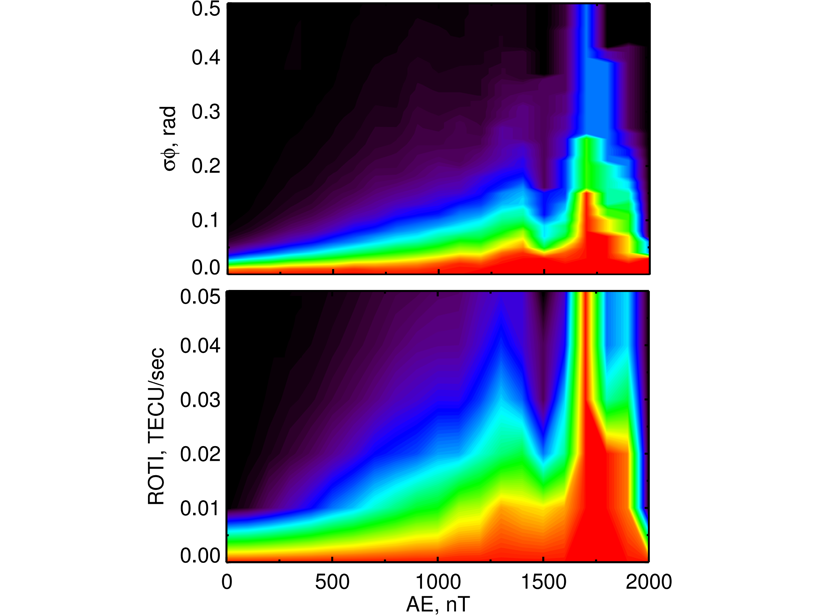Source: Journal of Geophysical Research: Space Physics
Scintillations are random fluctuations of radio signal amplitudes and/or phases caused by irregularities in the ionosphere, which impact global positioning system (GPS) signals. Makarevich et al. [2021] used data covering a period of 166 days from the incoherent scatter radar (ISR) at Poker Flat, Alaska (PFISR) and nearby global positioning system (GPS) receivers to examine the generation mechanisms and possible source regions of ionospheric scintillations.
Scintillations have been traditionally described using the S4 (amplitude) and σϕ (phase) indexes, but when these are unavailable a proxy rate of change of total electron content (ROTI) index is often used. The authors find that the ROTI index exhibits significant correlation and an approximately linear relationship with the phase scintillation metric σϕ in the auroral region while the amplitude scintillation S4 shows no relationship with ROTI or σϕ. The probability of high scintillation measured using ROTI or σϕ also increases with auroral activity. A strong connection between the auroral particle precipitation into the E-region and scintillation (ROTI and σϕ) was noted, indicating that the ionospheric E-region is a key source region for phase scintillation at auroral latitudes. The authors also showed that for one event, scintillations occurred on the trailing edge of a well-defined propagating density enhancement in the E-region, suggesting that the gradient-drift instability was the possible candidate for the plasma structuring and scintillations.
This paper adds to the growing body of evidence that ROTI can be used as a useful proxy for phase scintillation and that the ionospheric E-region is an important source region for ionospheric scintillations at auroral latitudes.
Citation: Makarevich, R. A., Crowley, G., Azeem, I., Ngwira, C., & Forsythe, V. V. [2021]. Auroral E-region as a source region for ionospheric scintillation. Journal of Geophysical Research: Space Physics, 126, e2021JA029212. https://doi.org/10.1029/2021JA029212
—Michael P. Hickey, Editor, JGR: Space Physics
Text © 2021. The authors. CC BY-NC-ND 3.0
Except where otherwise noted, images are subject to copyright. Any reuse without express permission from the copyright owner is prohibited.

